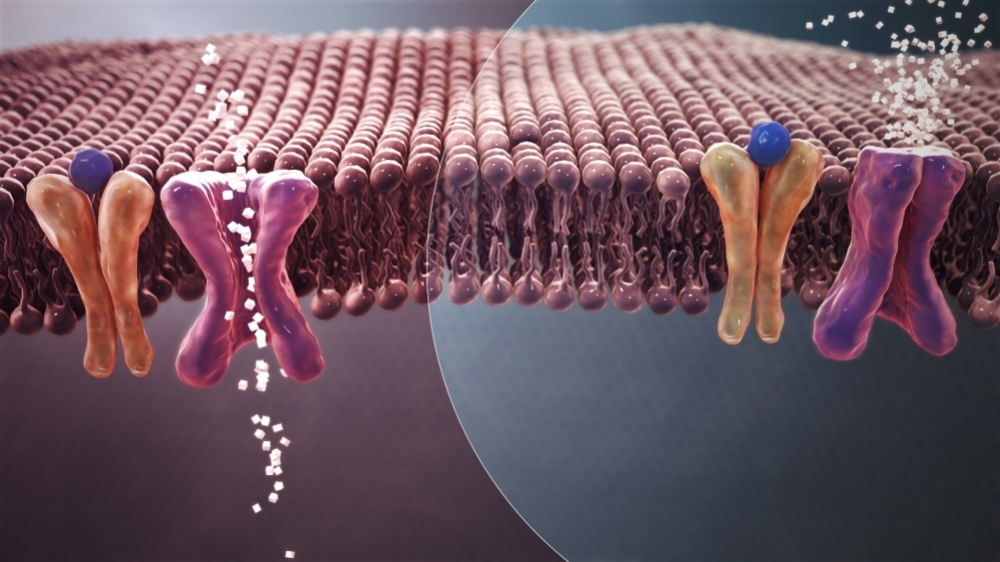

The device was developed by Brazilian scientists using nontoxic, biodegradable, low-cost materials. It can be used by people with diabetes to monitor blood sugar (normal blood sugar absorption mechanism in healthy individuals (left) and insulin resistance in patients with type 2 diabetes (right); image: Manu5 / Wikimedia Commons)
The device was developed by Brazilian scientists using nontoxic, biodegradable, low-cost materials. It can be used by people with diabetes to monitor blood sugar.
The device was developed by Brazilian scientists using nontoxic, biodegradable, low-cost materials. It can be used by people with diabetes to monitor blood sugar.

The device was developed by Brazilian scientists using nontoxic, biodegradable, low-cost materials. It can be used by people with diabetes to monitor blood sugar (normal blood sugar absorption mechanism in healthy individuals (left) and insulin resistance in patients with type 2 diabetes (right); image: Manu5 / Wikimedia Commons)
By José Tadeu Arantes | Agência FAPESP – An optical sensor that detects glucose has been developed by Brazilian researchers in a study led by Bruno Manzolli Rodrigues, a professor at the Universidade Brasil in São Paulo. The device can be used in the future to monitor blood sugar levels in people with diabetes, for example.
The study was conducted as part of a project supported by FAPESP. An article describing this research has been published in Materials Today: Proceedings.
“The sensor substrate was a hybrid material made of PVA [polyvinyl alcohol] nanofibers and graphene quantum dots. Its preparation was entirely ecofriendly. The result proved very robust and inexpensive,” Rodrigues told Agência FAPESP.
“PVA is a water-soluble synthetic polymer. It’s nontoxic and biodegradable. The graphene quantum dots were prepared using citric acid, found naturally in fruits and vegetables, as a precursor.”
The PVA nanofibers were produced by electrospinning, a well-known technique. The procedure is relatively simple. An aqueous solution containing PVA and graphene quantum dots is placed in a syringe coupled to a metal needle, and a very high-voltage power difference is applied (10,000-30,000 volts). When the electrical field reaches a critical value, the electrostatic repulsion force exceeds the surface tension, and a jet of the solution in the form of a filament is ejected through the needle into an electrically grounded collector. As this jet travels, the solvent evaporates, leaving only the charged polymer fibers.
To produce quantum dots, the researchers carbonized citric acid molecules to produce graphene nanoparticles stabilized in an aqueous solution. An optimized method of preparing hybrid PVA and graphene materials was reported in a previous article by Rodrigues and collaborators, published in the journal Materials Chemistry and Physics.
Rodrigues explained that these nanoparticles are tiny (2-5 nanometers) and have excellent optical and electronic properties thanks to quantum confinement and frontier effects.
“Being nanofibrous, the material has a very large surface area and can immobilize enzymes on its surface,” he said. “In this case, the enzyme of interest is glucose oxidase, which is highly selective for glucose molecules. When the enzyme is immobilized on the material, it reacts with glucose molecules in the solution, and the product released after the enzyme’s reaction with glucose is hydrogen peroxide [H2O2], which penetrates through the pores of the nanofibers and suppresses the fluorescence of the quantum dots.”
Thus, the more glucose the solution contains, the more peroxide and the less fluorescence are produced. This makes it possible to construct a quantitative scale by inversely correlating the fluorescence with the glucose concentration. “From 1 to 10 micromoles, the glucose-fluorescence correlation was linear, and the material detected it very effectively. The limit for detection was 12 micromoles,” Rodrigues said.
A mole is the International System unit for the amount of a substance. One mole contains exactly 6.02214076 × 1023 elementary entities (molecules, ions, atoms or subatomic particles), and this number is called Avogadro’s constant.
The linear response of fluorescence to the glucose concentration makes the material well suited for use as a sensor. “Looking beyond this specific application, we now want to test the device for analysis of other substances, such as blood and urine,” Rodrigues said.
The article “Glucose sensing via a green and low-cost platform from electrospun poly(vinyl alcohol)/graphene quantum dot fibers” can be retrieved from www.sciencedirect.com/science/article/pii/S2214785319300434?via%3Dihub.
Republish
The Agency FAPESP licenses news via Creative Commons (CC-BY-NC-ND) so that they can be republished free of charge and in a simple way by other digital or printed vehicles. Agência FAPESP must be credited as the source of the content being republished and the name of the reporter (if any) must be attributed. Using the HMTL button below allows compliance with these rules, detailed in Digital Republishing Policy FAPESP.





